
For smartphones, the SoC it carries is the only benchmark for measuring performance, as a SoC chip integrates modules such as the CPU (processor), GPU (graphics card, including integrated and discrete graphics), ISP (image signal processor), and Modem (modulator-demodulator). Once you grasp the strength of the SoC, it becomes easy to pinpoint the models with the best performance-to-price ratio. For laptops, however, the performance depends on the CPU and GPU chips, where the former affects the overall computational performance, while the latter controls the smoothness of the gaming world.
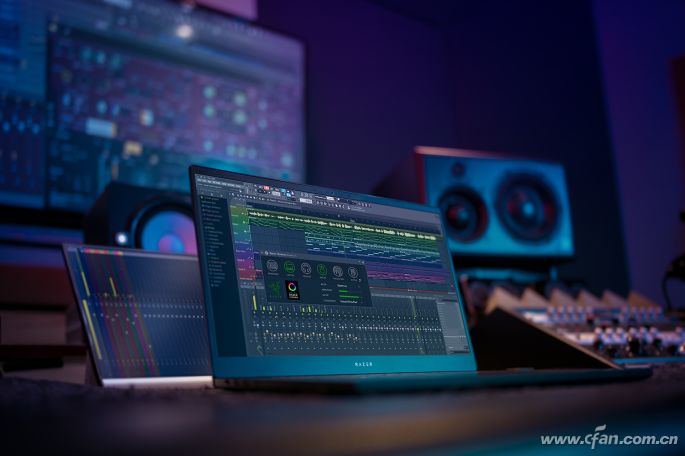
When we focus on the field of mobile processors specifically for laptops, it is not hard to see that we are in an era of “chaotic governance.” Taking Intel as an example, even the well-known eighth-generation Core platform includes three generations of processes (14nm+, 14nm++, and 10nm), as well as six major platforms: Kaby Lake-Refresh, Kaby Lake-G, Coffee Lake, Cannon Lake, Whiskey Lake, and Amber Lake. At this point, if we also consider AMD’s latest mobile Ryzen platform and Intel’s Gemini Lake platform aimed at the entry-level market… even the CFan editor would present a confused expression.
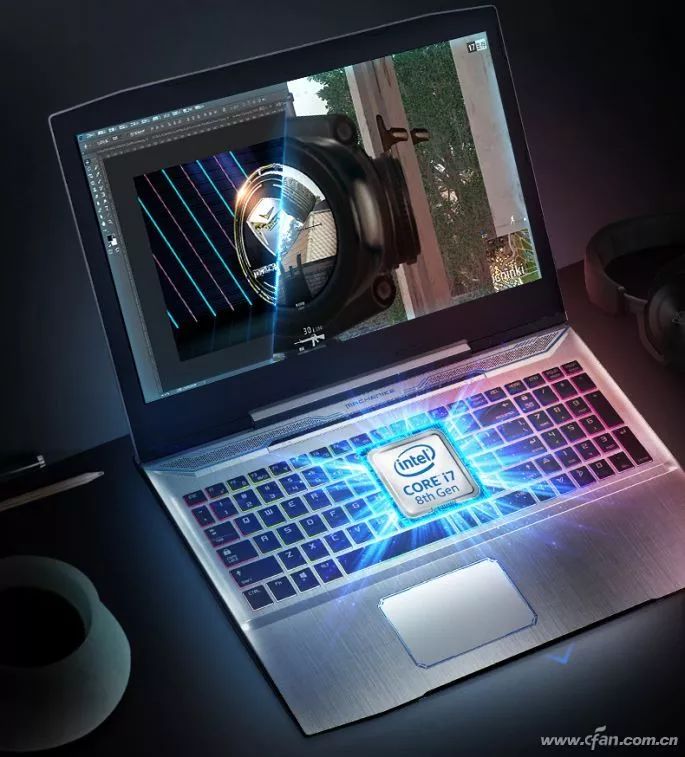
The question arises: among the processors dedicated to laptops, which one has the strongest performance? Which one has the weakest? Does AMD now have the strength to challenge Intel? To address these questions, it is necessary to sort through the mainstream mobile processors currently available.
In the spirit of looking forward, this article will not discuss outdated platforms that have been eliminated by history, focusing entirely on the low-power processors customized by Intel for lightweight laptops that are currently on sale. As for AMD and mobile processors dedicated to gaming laptops, we will continue to present them tomorrow.
The single-core/multi-core benchmark scores mentioned in this article are sourced from the average scores of Cinebench R15 (64bit) for the corresponding processor models on www.notebookcheck.net. Due to different thermal designs and power/temperature wall thresholds among different models equipped with the same processor, actual performance may vary, so these scores are for reference only.
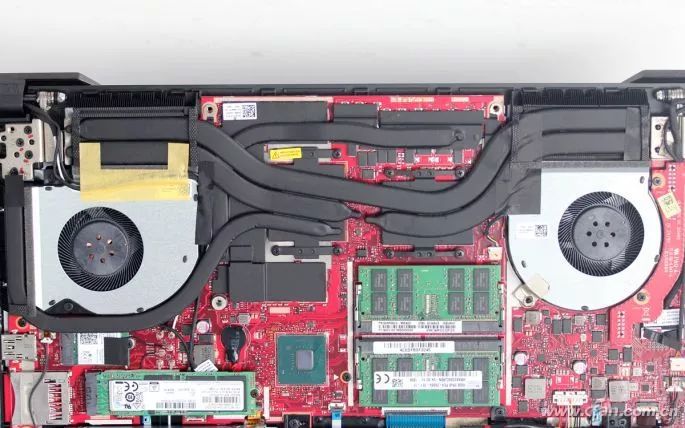
The thermal design of the laptop significantly affects actual performance.
Celeron and Pentium: Once Glorious, Now Dusty
Celeron and Pentium once represented an era. Unfortunately, since the advent of Core processors, these two classic processor brands have gradually fallen to the low-end market, only contributing to the entry-level market under 3000 yuan.
New Low-End Representatives
In the laptop segment priced below 2000 yuan, many products still carry “antique” processors like Atom X5-Z8350 and Celeron N3350. If you buy a laptop just for watching videos or typing, these products will suffice.
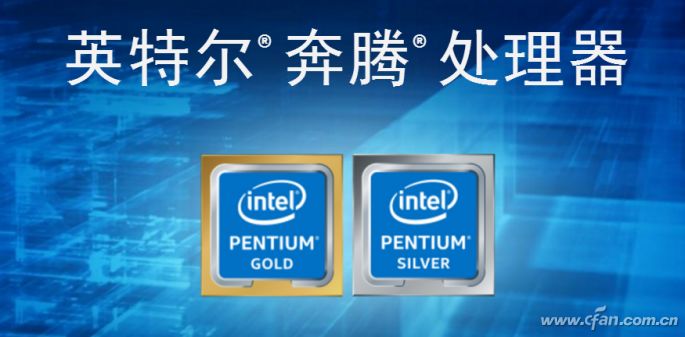
However, if you wish for a laptop with higher “productivity,” you need to recognize Intel’s latest gold/silver Pentium and new Celeron processors released at the end of 2017 (Table 1).
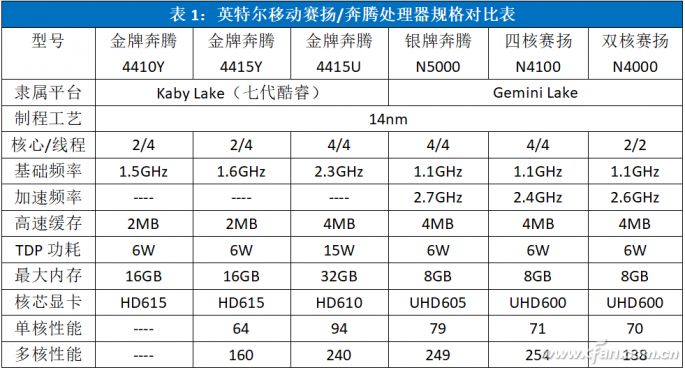
Intel’s currently lowest-end laptop processors belong to the Gemini Lake platform, including the silver Pentium N5000, quad-core Celeron N4100, and dual-core Celeron N4000. The next higher tier includes the 4410Y, 4415Y, and 4415U, which are classified as “golden Pentium,” belonging to a simplified version of Kaby Lake (seventh-generation Core).
No Need to Worry About Gold and Silver Attributes
Seeing the distinction between “gold” and “silver” Pentium, many users might assume that the former has overwhelming performance advantages, right? In fact, from Cinebench R15 tests, even the multi-core score of the quad-core Celeron N4100 is higher than that of the golden Pentium 4415U, and it seems to even outperform the golden Pentium 4415Y?
This is not an illusion. The frequency of the golden Pentium 4415Y is too low, and it has only 2 physical cores. These processors primarily support higher memory capacities and (relatively) superior integrated graphics performance, which is why they receive higher rankings. For ordinary consumers, actual performance is what truly matters. Therefore, when choosing an entry-level laptop, aiming for the quad-core Celeron N4100 is sufficient; the higher-tier gold and silver Pentiums may not be economically viable.
For example, the Microsoft Surface Go, which adopts a PC tablet 2-in-1 form factor, starts at 2988 yuan (gold Pentium 4415Y + 4GB + 64GB), which seems decent?
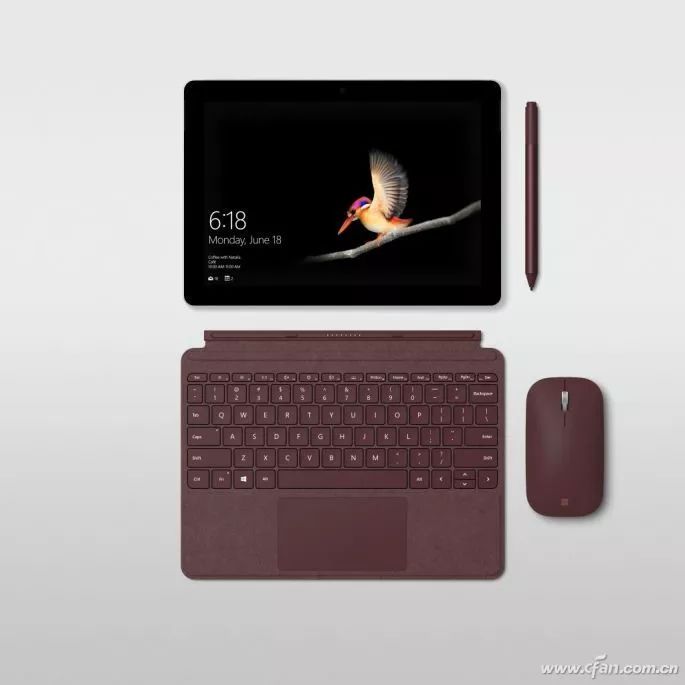
If you’re not interested in the tablet computer usage model, you can actually get better performance experiences than the Surface Go at similar or lower price points. For example, the Xuanlong Alpha L9, a 15.6-inch lightweight laptop that comes equipped with the gold Pentium 4415U and an independent MX150 graphics card, is priced at only 3099 yuan. Additionally, Acer’s Swift 3 A314, Lenovo’s ThinkPad V330, ASUS’s X441, and HP’s 246 G6 are all high-cost-performance products equipped with the Gemini Lake platform at the 2xxx yuan price range.

In summary, although Intel’s new generation of Pentium and Celeron has seen some performance improvements compared to the past, we still cannot have high expectations for their actual performance; they can only run games of LOL level smoothly at low graphics settings. Therefore, we might as well consider them as “the new era’s netbooks,” suitable for basic office work and light entertainment, making them ideal as the second laptop at home.
Network Optimization: New Additions to the Core Y Series
Starting from the fifth generation Core (Broadwell), Intel customized a new Y series chip called “Core M” for PC tablets and 2-in-1 devices, with a TDP of only 4.5W and no need for fan-assisted cooling, evolving from Broadwell-Y → Skylake-Y → Kaby Lake-Y. However, the Y series processors belonging to the eighth generation Core were “late” in 2018.
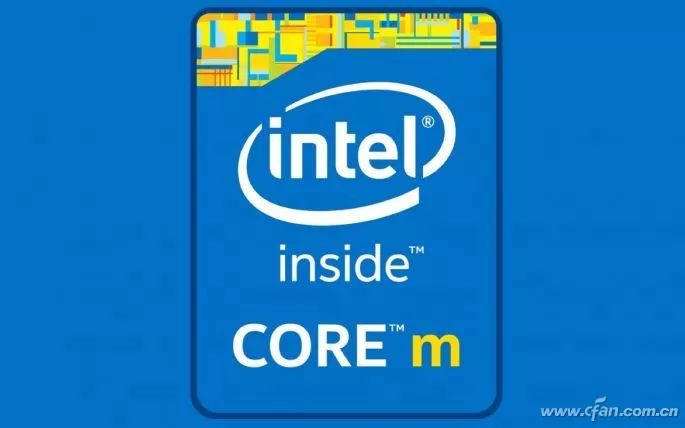
The Late Arrival of the Eighth Generation Y Series Family
Intel had already released the Y series members of the seventh generation Core (Kaby Lake-Y) back in Q2 2016, but unfortunately, this series had not been updated in the past two years. The lightweight laptops and 2-in-1 new products seen on the market still carry the Core M3-7Y30 from the seventh generation Core Kaby Lake-Y platform. The good news is that Intel has finally completed the eighth generation Core processor family, which includes the new generation Y series processor codenamed “Amber Lake-Y”.
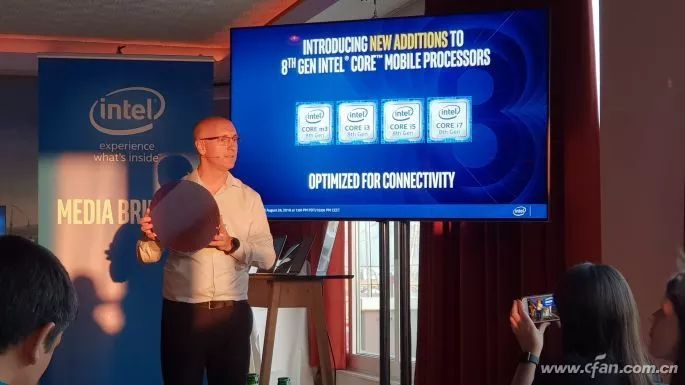
The Lower Limit of “Productivity”
The Amber Lake-Y platform includes three products: Core i7-8500Y, Core i5-8200Y, and Core M3-8100Y (Table 2), all manufactured using a 14nm++ process. At the architectural level, they are basically the same as the seventh generation Core Kaby Lake-Y, except that the TDP has been increased from 4.5W to 5W, and the clock frequency has been further increased. Officially, it is stated that the performance of Amber Lake-Y has seen a double-digit improvement compared to the previous generation Core M, and improvements have been made to Wi-Fi and LTE performance, with optimizations for stylus and touch.
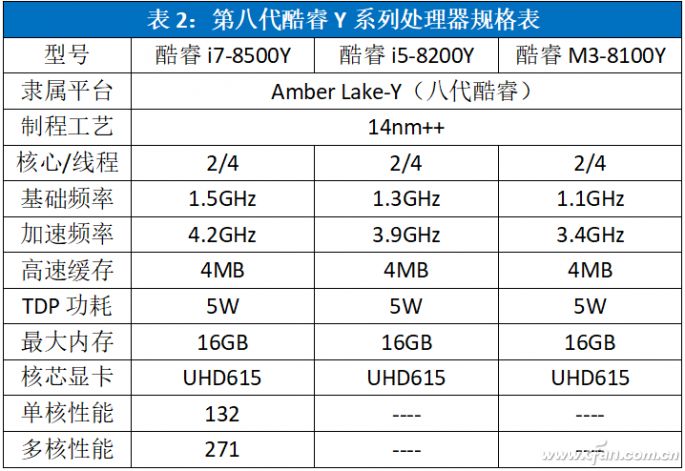
It is reported that the Dell XPS 13 2-in-1 version and Apple’s 12-inch MacBook will be the first to feature Amber Lake-Y platform processors by the end of the year, while other brands will follow suit by early 2019 at the latest.
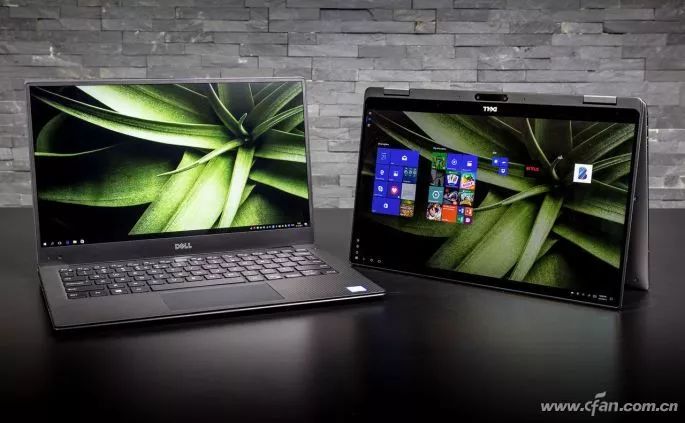
As a reference, the lowest-end Core M in the previous generation Core M family had benchmark scores of 105 (single-core) and 250 (multi-core) in Cinebench R15, significantly outperforming the gold/silver Pentium family. It can be said that the Core M has always represented the lower limit of “productivity” among the Core processor families of the same period. Only devices equipped with them can possess mainstream-level office and entertainment potential, sufficient to serve as the second PC at home.
It should be noted that the Core M is a “second PC,” not the “second laptop” corresponding to the previous Celeron/Pentium.
Three Generations of Core U Series Transition
Among Intel’s various generations of Core families, the U series low-power processors with a TDP of 15W are considered the “backbone,” representing the perfect balance between performance and power consumption. However, due to the continuous adjustment of Intel’s product strategy, the U series eighth generation Core processors have also become the most chaotic existence in history.
First Wave: Kaby Lake Refresh
Intel released the first wave of U series eighth generation Core processors, codenamed “Kaby Lake Refresh,” back in August 2017. The initial members included i5-8250U/i5-8650U and i7-8550U/i7-8650U (the models with a 6 in the number also focus on vPro technology), and then a lower-positioned Core i3-8130U was added in Q1 2018 (Table 3).
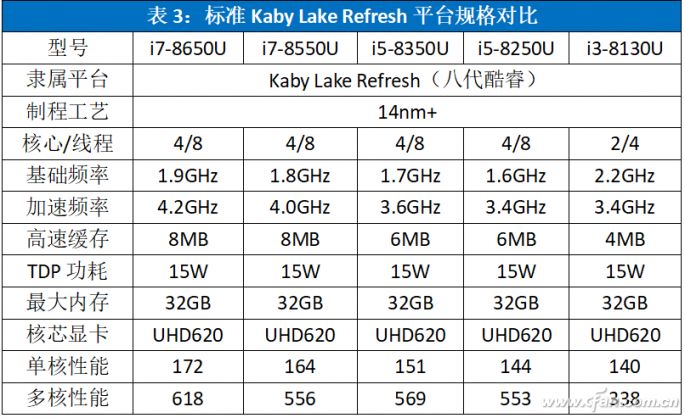
The aforementioned models should be the most familiar mobile processors to everyone. Thanks to the advantages of 4 cores and 8 threads as well as higher clock speeds, the i5-8250U and i7-8550U, under the thermal design’s allowance, perform very close to the 45W TDP seventh generation Core i5-7300H, making them capable of handling heavy office and moderate entertainment tasks. When paired with the MX150 discrete graphics card, they can smoothly run “PUBG” at 720P+ low graphics settings.
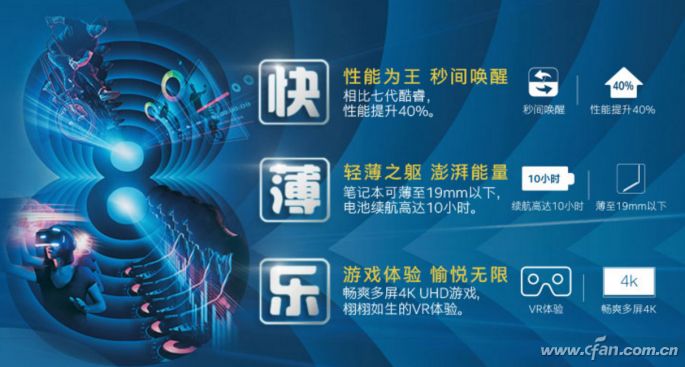
The Kaby Lake Refresh platform primarily serves lightweight laptops and is often paired with NVIDIA MX110/MX130 and MX150 discrete graphics, suitable for users who prioritize portability and performance but are not interested in AAA game titles. Considering that the thermal design of lightweight laptops is generally not perfect, users do not need to insist on the Core i7-8550U (which is more likely to trigger throttling and affect performance); the i5-8250U is sufficient, and it is more practical to use the saved money to upgrade to a larger SSD.
Second Wave: Kaby Lake Refresh
In April 2018, Intel added new members to the Kaby Lake Refresh platform with integrated “Iris” graphics, including i7-8559U, i5-8269U, i5-8259U, and i3-8109U (Table 4). Compared to predecessors like the i5-8250U, the new U series eighth generation Core processors increased the TDP from 15W to 28W and replaced the UHD620 integrated graphics with Iris Plus 650, which represents the pinnacle of Intel’s graphics technology, with performance comparable to NVIDIA GeForce 930MX.
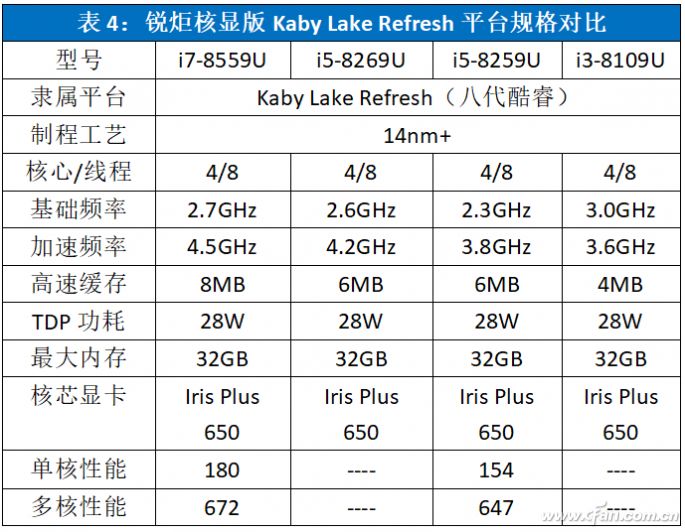
Additionally, the new U series Core can be paired with Intel’s latest 300 series chipset motherboards, thus obtaining gigabit-level wireless cards, native USB3.1 Gen2, and support for Optane memory.
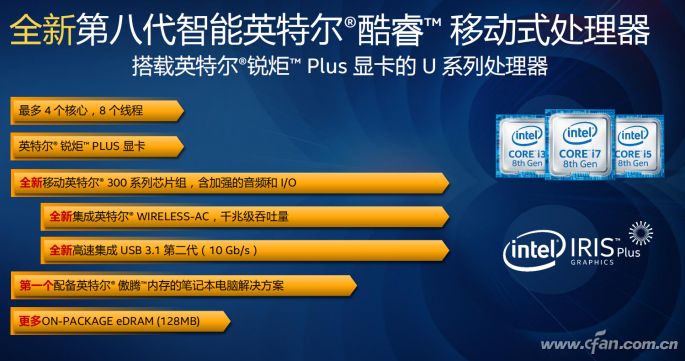
Unfortunately, lightweight laptops prefer to pair with MX150, and the high cost and non-dominant GPU performance of the new U series Core make its positioning somewhat awkward, as it is still mostly used in NUCs (mini PCs) and a few high-end lightweight laptops. Ordinary users can ignore it.
Third Wave: Cannon Lake
In May 2018, a model named “i3-8121U” was added to Intel’s official ARK database as part of the eighth generation Core processors. Although it also belongs to the U series, it is the first to use the legendary 10nm process. Intel had previously stated that the 10nm process would not be commercially mass-produced until the end of 2019!
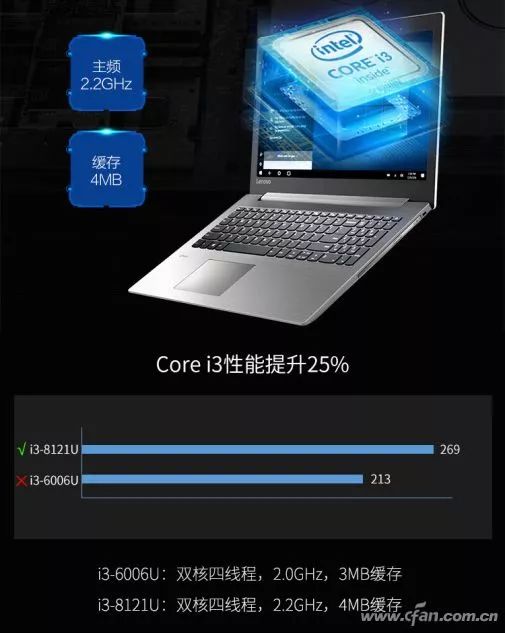
Indeed, we can regard the i3-8121U as Intel’s trial of the 10nm process Cannon Lake platform, which was never intended for mass production. So far, only Lenovo’s IdeaPad 330 has armed the i3-8121U processor, and the performance of this chip is equivalent to that of the seventh generation Core i3 (U series). At the same price point, one can already buy models equipped with Core i5-8250U, so it is not worth our attention.
Fourth Wave: Whiskey Lake
At the end of August 2018, Intel suddenly announced the new generation of U series members in the eighth generation Core processor family. It is important to note that the new U series no longer belongs to the Kaby Lake Refresh platform but has upgraded to the latest Whiskey Lake platform, with initial members including i7-8565U, i5-8265U, and i3-8145U (Table 5).
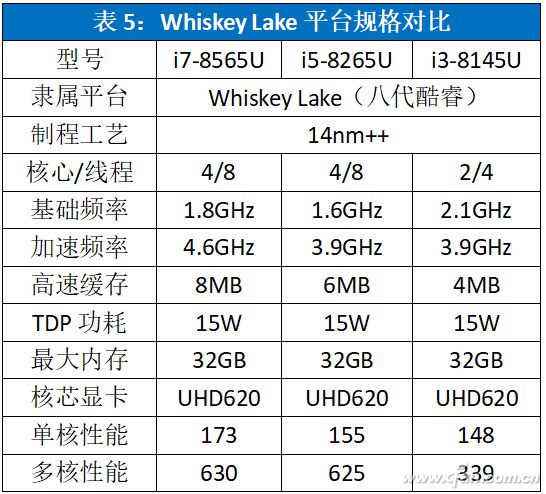
Compared to predecessors from the Kaby Lake Refresh platform, the Whiskey Lake platform employs the latest 14nm++ process, significantly enhancing turbo boost frequencies while also boasting excellent power-saving characteristics. It is reported that when equipped with the i7-8565U processor, using the integrated graphics and a 52Wh battery, it can continuously play 16 hours of local 1080P video, a significant improvement over the current average of 10 hours.
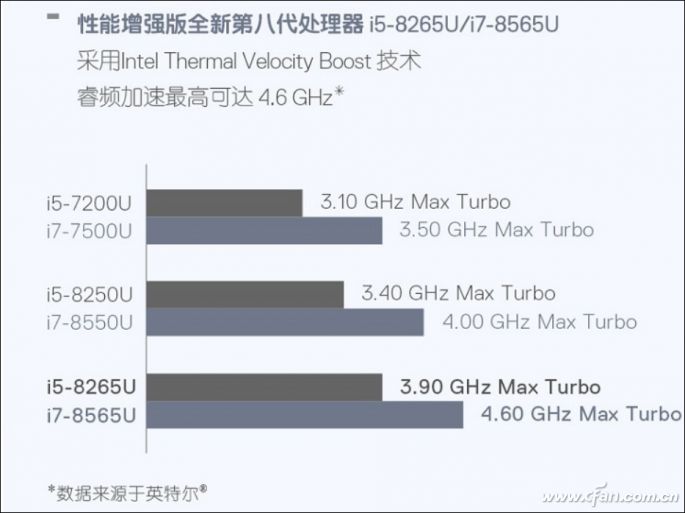
At the same time, the Whiskey Lake platform has optimized network connectivity capabilities for lightweight laptops and 2-in-1 products, integrating gigabit-level WiFi controllers and native USB3.1 controllers, adding DSP modules needed for voice recognition, which can provide support for many voice assistants and enhance voice recognition capabilities. Additionally, the new platform integrates an Optane controller, allowing consumers to choose an Optane + HDD solution to achieve a balance between capacity and performance.
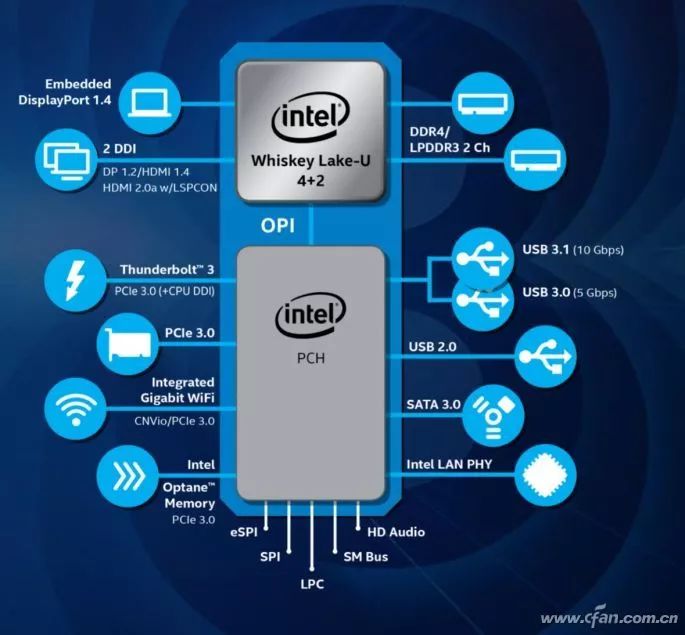
In summary, the Whiskey Lake platform has improved performance, strengthened I/O interface functions, and significantly extended laptop battery life.
Currently, we can already purchase new lightweight laptops equipped with chips from the new platform, such as HP Pavilion 15 (i5-8265U + MX150), Acer Swift 5 A515 (i5-8265U + MX130), Dell Inspiron 5000 3rd generation (i5-8265U + MX150), and HP’s new ENVY 13 (i5-8265U + integrated graphics), which are just slightly more expensive than the old models equipped with the Kaby Lake Refresh platform.
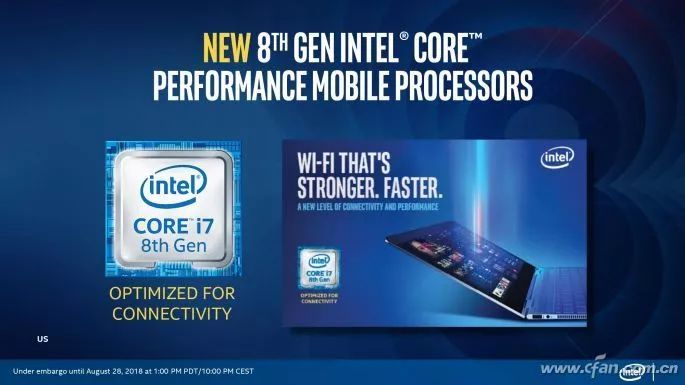
Considering the high clock speeds and functional advantages of the Whiskey Lake platform, the performance of the i5-8265U is sufficient to rival or even surpass that of the i7-8550U. Therefore, if you plan to purchase a new lightweight laptop soon, it is advisable to prioritize products designed based on the new platform.
After reading this article, 99% of readers will also click:


Click “Read Original” for more exciting content